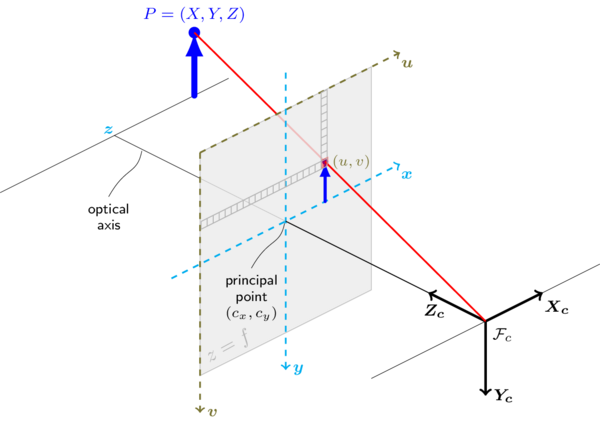I have two right handed coordinate systems.
As you can see with the black arrows, the camera looks down the positive $Z$ axis. You can ignore the rest of the diagram.
OpenGL
Although not visible here, the camera in OpenGL looks down the -Z axis. I want to transform a 3D point in front of the camera in the OpenCV coordinate system to a 3D point in front of the camera in the OpenGL.
I'm trying to represent this in a 4x4 matrix that concatenates R and T with 0001 at the bottom.
So far, I've tried this
1 0 0 0
0 -1 0 0
0 0 -1 0
0 0 0 1
but it doesn't seem to do anything, nothing shows up in the OpenGL coordinate system.





[0,1,0]) to see if they get rotated. Another way to double check this is using OpenCV viz to debug/visualize the points before and after the transformation – Bentham